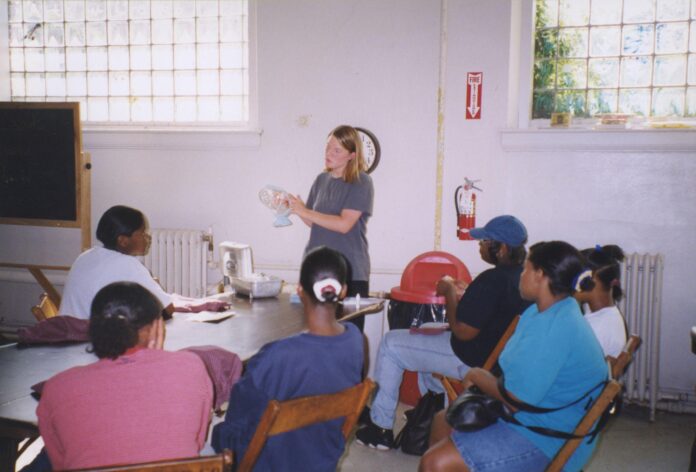Just days before voters in nearby Ohio rebuffed a Republican attempt to curtail amendments to the state’s constitution, ahead of an important referendum on abortion, an installation opened at the Minneapolis Institute of Art that aims to destigmatise the medical procedure. The last safe abortion (until 31 December 2023), by the artist Carmen Winant, employs images drawn from clinics, universities and historical archives in Minnesota, Iowa, Nebraska and Ohio, along with photographs Winant took in present-day reproductive health spaces, to show the routine but essential work that is done there.
“My reproductive rights and agency are really core values of my feminism,” Winant says. A previous project, My Birth, which was shown at the Museum of Modern Art in New York, focused on her own and others’ experiences with pregnancy and birth. “If we don’t have those things, we don’t have freedom. I’ve always felt that and operated on it in a number of ways. But it’s never really lived inside of my artwork, at least not explicitly. And for reasons that I don’t have to explain, the crisis around reproductive care access has been heightening.”

An image from Carmen Winant: The last safe abortion at the Minneapolis Institute of Art Courtesy of Carmen Winant, from Preterm, Cleveland
“And because I live in Ohio, and have for almost ten years, it’s real and present,” Winant adds. “That’s evidenced by what happened with this election. It’s urgent for me in a way that other projects haven’t been.”
Winant first conceived of the idea for the project a few years ago, in conversations with Casey Riley, the chair of global contemporary art and curator of photography and new media at the Minneapolis Institute of Art, who organised this display. The idea was to focus on abortion not as an ideological issue, but as an everyday healthcare concern.
Winant started searching local archives and reaching out to clinics for documentation. Some of the earliest images in the collection she has gathered are from the University of Minnesota and date back to the 1940s and 50s, when abortion was largely illegal in the US. Most of the pictures are from the 1960s to the present day, when the recently overturned Roe v Wade Supreme Court decision made the procedure safer.

An image from Carmen Winant: The last safe abortion at the Minneapolis Institute of Art Courtesy of Preterm, Cleveland
“The thing that was really remarkable in all of the archives was just how regular [the images] were,” Winant adds. “There were occasionally pictures of protesters or confrontations with the cops. But it was just pictures of staff parties and Bring Your Daughter to Work Day and trainings, instructional pictures of how you sanitise surgical instruments.”
This clashes tellingly with the images of abortion clinics as they are disseminated outside clinics’ doors, on the lurid posters of anti-abortion protestors or in media reports. “Seeing it from the inside felt so spectacularly unspectacular,” Winant says. “And that was moving because so many of us know [that’s what it’s like]—we’ve been in there, even if it’s for a pap smear or birth control or whatever. But it’s not something that, generally speaking, I’ve seen pictures of.”

Carmen Winant installs The last safe abortion at the Minneapolis Institute
of Art. Photo courtesy Minneapolis Institute of Art.
Winant added to the historical record with images she took inside contemporary clinics, “which was an act of such tremendous generosity on their end, considering the sensitivity of their line of work”, she says. “There’s these different sources of input, that are all being braided together, and exist across time.”
The installation in Minneapolis takes over most of the gallery, with a floor-to-ceiling collage of thousands of photographic prints. The show does not carry a disclaimer for audiences, since the images are so routine, which Winant says she is happy about. “It was really important to me to put abortion in the title of the show, which I was so pleased the museum let me do. I don’t know if that could have happened in a museum in Ohio, where I live,” she says.
“Sometimes you have to name it,” Winant says of such difficult topics. “That’s part of the work of destigmatising it.”
- Carmen Winant: The last safe abortion, until 31 December 2023, Minneapolis Institute of Art

























